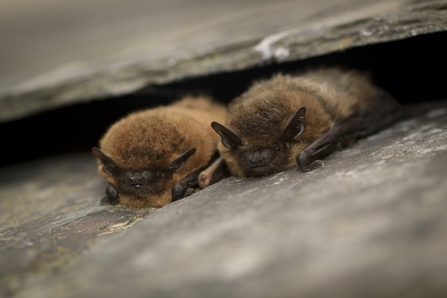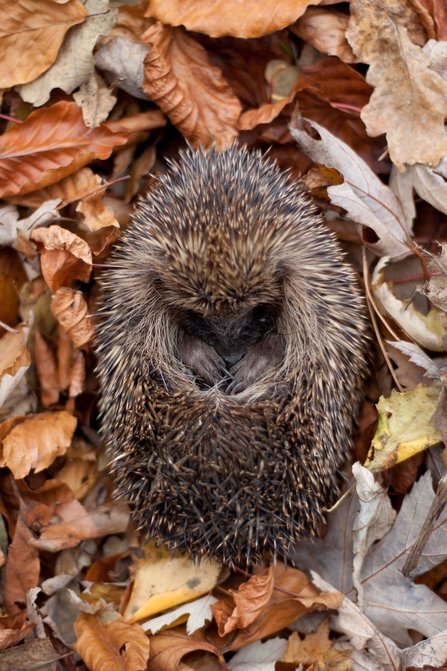Hibernation or Torpor?
Hibernating dormouse ©Danny Green

Common Pipistrelle bat ©Tom Marshall
All warm-blooded animals need to keep their body temperature higher than the surroundings, and that uses energy: shelter, fur, clothing are all strategies for conserving energy, but if there isn't enough food around then something more drastic might be necessary.
Hibernation is triggered by hormonal changes and reduction in daylight hours and always happens in the winter; a creature tucks itself away in a specific shelter called a hibernaculum and its body temperature and metabolic rate drop drastically to reduce its energy use. It's not strictly true that it's always a continuous sleep either, although ideally it would be, for maximum energy conservation - but animals might wake every few weeks.

Hedgehog ©Tom Marshall
This could be during a particularly warm spell to take advantage of an availability of food, or maybe during a really cold spell - because in fact if temperatures drop too low there's a risk that hibernating animals' blood could start to freeze, which would kill them. Waking up from hibernation uses energy as the body temperature and metabolic rate gradually rise, so the more often an animal's going to wake, the more important it is that it has fattened up in the Autumn. If an animal wakes without adequate resources to see out the rest of its hibernation period, and there isn't enough food available, it can starve.
Torpor is rather different; it's a shorter-term lowering of body temperature and metabolic rate, often to conserve energy during a particularly cold spell when food may be scarce. It might only be for a few hours or perhaps a day or two but saves much more energy than normal sleep, and doesn't require the same build-up of body fat that hibernation does. There are quite a lot of creatures that use torpor; badgers and squirrels for instance remain active during the winter but will go into torpor during very cold spells. Bats hibernate in the winter, but might also go into torpor during cold spells at other times of year.
Smaller animals and birds, whose metabolism is normally really quick so uses lots of energy, use torpor to reduce energy use. They're often not able to store much body fat as they're so small. Some small birds (including hummingbirds; I know we don't get them in Cumbria!) also enter torpor during their migration because it allows their stored fat to last longer so that they can complete the journey. That's a pretty neat strategy.

Hibernating dormouse ©Danny Green
Tucked into our heated houses we probably don't really appreciate how important is it in nature to conserve energy, but if you want to help your local wildlife survive the winter there are lots of things you can do to provide shelter: bird and bat boxes are valuable, as are piles of leaves or logs for small mammals, or small gaps under your shed or decking. Try to resist tidying the garden too much before winter. Remember that whether they're hibernating or using torpor creatures need insulation, and somewhere that predators can't get to them.
Dyane Silvester (21 January 2022)
